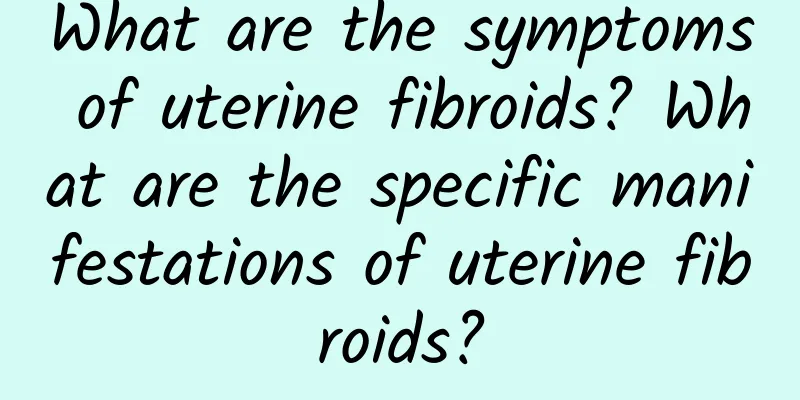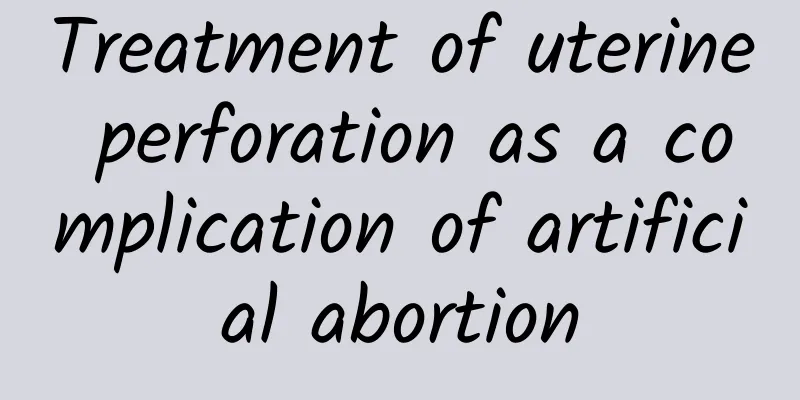What are the symptoms of uterine fibroids? What are the specific manifestations of uterine fibroids?

|
Uterine fibroids are one of the most common benign tumors in the female reproductive organs and one of the most common tumors in the human body. They are also called fibroids and uterine fibroids. Because uterine fibroids are mainly composed of the proliferation of uterine smooth muscle cells and a small amount of fibrous connective tissue exists as supporting tissue, they are more accurately called uterine leiomyoma. Uterine fibroids. What are the specific symptoms of uterine fibroids? The symptoms of uterine fibroids have no obvious characteristics in the early stages. Only when the uterine fibroids are large or grow in a special location, will obvious symptoms appear, mainly including the following aspects: Pain: Generally, there is no pain symptom. However, when the fibroids undergo red degeneration or the pedunculated fibroids are twisted, the submucosal fibroids stimulate the spasmodic contraction of the uterus. It can cause acute abdominal pain. Uterine fibroids can affect women's menstruation, leading to abnormal menstruation and increased bleeding. If uterine fibroids cause long-term menstrual volume, it can lead to secondary anemia. In severe cases, symptoms such as general fatigue, pale complexion, shortness of breath, and palpitations may occur. Menstrual changes: Menstrual changes are the most common symptoms of uterine fibroids, which are manifested as increased menstrual volume, shortened cycles, or prolonged menstruation. Irregular bleeding may also occur. Submucosal fibroids can cause bleeding due to increased mucosal area, surface necrosis, and infection. When intramural fibroids are larger, the uterine cavity is enlarged, the endometrial area is enlarged, the uterus contracts poorly, or there is excessive endometrial hyperplasia, which is manifested as shortened menstrual cycles, increased menstrual volume, and prolonged menstrual periods. Increased vaginal discharge is common in larger intramural fibroids. Due to the increase in the uterine cavity and the increase in glandular secretions, leucorrhea increases; when submucosal fibroids are accompanied by infection, the amount of leucorrhea is also large and sometimes bloody. Compression symptoms: The increase of fibroids will compress nearby organs and produce various symptoms. For example, uterine wall fibroids or cervical fibroids can compress the bladder, urinary frequency, urinary dysfunction, urinary retention, etc. Compression of the ureter can cause hydronephrosis. Uterine posterior wall fibroids can squeeze the rectum, causing difficulty in defecation. Infertility: 25~35% of patients with uterine fibroids may become infertile because the fibroids prevent the fertilized egg from implanting or the sperm from entering the fallopian tube. |
Recommend
Is pelvic effusion puncture a good treatment?
Pelvic effusion can cause patients to have abdomi...
Postoperative care for uterine effusion
Uterine effusion is a very common gynecological d...
How to treat severe cervical erosion?
Cervical diseases must be treated in time. Only a...
Introducing the symptoms of chronic adnexitis
Among the many common gynecological diseases, adn...
Diagnosis of functional hypothalamic amenorrhea
The diagnostic process of functional hypothalamic...
Should I apply ice or heat first when I get hurt? Nutritionists help you decipher exercise myths!
In recent years, the trend of exercising has beco...
What are the dangers of abnormal leucorrhea?
What are the dangers of abnormal leucorrhea? The ...
Will cervicitis heal on its own?
Whether cervicitis can heal itself needs to be an...
What to do about amenorrhea
What to do about amenorrhea? Amenorrhea can be ca...
Can vaginal ultrasound detect pregnancy?
Vaginal ultrasound can check pregnancy and has hi...
Introduction to the best treatment for chronic pelvic inflammatory disease
Chronic pelvic inflammatory disease is a relative...
What are the symptoms of cervical hypertrophy?
Cervical hypertrophy is a common gynecological di...
What kind of care should be done after painless abortion?
Painless abortion is one of the abortion methods,...
What should you pay attention to in preventing cervicitis?
Cervicitis is a common gynecological disease. The...
Mediterranean diet remains the best diet! 6 unexpected benefits of the Mediterranean diet you must know
The Mediterranean diet has many health benefits. ...









